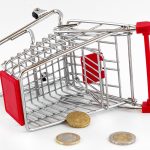- July 30, 2022
- Posted by: simba001
- Categories: Business Insights, Retail POS Insights

<<This is Part 1 Of the Series On Dead Stock. Check Part 2 Here and Part 3 Here>>
In retail, dead stock is any inventory that does not sell or turn over. The existence of dead stock represents a risk of lost revenue for retailers. Stores that do not use inventory management software are much more likely to experience dead stock in their stores.
Lost revenue, higher carrying costs, and smaller inventory space are some of the repercussions of dead stock that, if not addressed as soon as possible, can impede your business’s operations. Dead stock is incredibly costly for companies. Businesses cannot recoup the costs of unsold goods they have made themselves or purchased from another company.
And although dead stock is sometimes due to poor inventory management, there are also external factors that lead to it. That’s why it’s crucial to understand the key factors that can lead to dead stock and how to prevent them.
If you’re a retail business owner, the chances are that with each change of season, somewhere in your inventory, there is an ever-growing amount of product that simply isn’t selling. In other words, dead or obsolete stock refers to items that retailers or online retailers cannot sell.
1. What Is Dead Stock?
If you’re a retail business owner, the chances are that with each change of season, somewhere in your inventory, there is an ever-growing amount of product that simply isn’t selling. In other words, dead or obsolete stock refers to items that retailers or online retailers cannot sell.
A retail business may end up with dead stock due to ordering too many items and then finding that they did not sell as expected. Dead stock also can include damaged items, wrong deliveries, leftover seasonal products, or expired items.
Dead stock is even more challenging for convenience and grocery stores because perishable items, such as food, fruit, or medicine, can quickly become dead stock if they spoil.
Dead stock is detrimental to retail businesses because it ties up capital, affects revenue, increases carrying costs, and takes up valuable shelf space. Here’s how dead stock can be directly and indirectly costly to your business:
2. How Does Dead Stock Affect Your Retail Business?
The most obvious consequence of dead stock for a retail business owner is lost revenue. It’s best explained with a brief hypothetical. Let’s say you own a grocery store. You have ordered 200 bags of potatoes. Your potatoes will be sold in three months based on your inventory forecast. Surprisingly, consumer demand for potatoes has suddenly plummeted due to a new trend in diet fad. As a result, you only manage to sell 20 bags of potatoes after three months. This remaining balance is now considered dead stock. If your price for a bag of potatoes was $100 and you had 180 bags leftover, you would have a loss in expected profits of tens of thousands. But worse, this will likely have caused a ripple effect among your suppliers, who also have too many potatoes in stock.
Money lost
The inability to sell your products hampers your chances of generating a profit from the merchandise you have purchased. Therefore, your investment is down the drain, which is a loss of revenue for your business.
Increase in employee salaries
Inventory management requires more effort if there are more items on the shelves. More items mean more maintenance, shuffling, counting, and ultimately disposing of the items. All of these tasks require more staffing to do the work. More employees mean higher payroll costs, which can have a disastrous impact on your cash flow management and profit margin. In the end, such a snowball effect can be mighty costly.
Higher holding costs
Also called inventory carrying costs, holding costs are those associated with storing inventory that remains unsold. Holding costs generally include storage space, labor, and insurance. The more cash a company has tied up in stock, the less cash it spends on other priorities.
Less inventory space
As a retailer, managing store space is of utmost importance. Retailers are very mindful of inventory turnover per foot of shelf space. Dead stock takes up valuable shelf space that could be used for faster-selling products. If you maintain low inventory levels, you don’t need to devote as much storage space in the building for additional inventory. This means you have more floor space to market and sell your products.
>>> Dead Stock Part 2: Causes of Dead Stock in a Retail Business
>>> Dead Stock Part 3: How To Get Rid of Dead Stock





